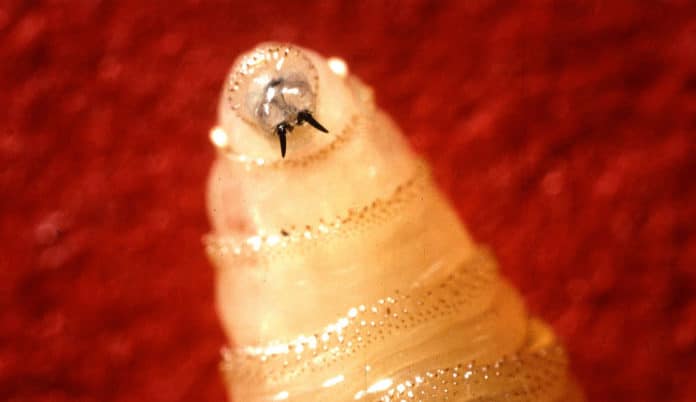
Increased trade with Cuba might have brought the little buggers back.
This week, however, U.S. officials confirmed that the screwworm is back. Poor deer in a wildlife refuge in the Florida Keys had somehow picked up the parasite, the U.S.’s first local infestation in 30 years. The screwworm “sends shivers down every rancher’s spine,” said Florida’s agricultural commissioner Adam Putnam in an unusually vivid official statement. “I’ve grown up hearing the horror stories from the last occurrence.”
Last time, the U.S. eradicated the screwworm by releasing sterile males, essentially putting the species on birth control. Florida will now be using the sterile male screwworms to tamp the infestation in the Keys. The success of the past eradication campaign , the current failure (temporary, hopefully) in Florida, and the challenge of maintaining a permanent sterile insect “wall” to keep screwworms out of the U.S. hold lessons for the control of other insects. Especially mosquitoes and especially in Florida, where the British company Oxitec now wants to test mosquitoes genetically modified to be sterile to combat diseases like Zika.

A Florida lab opened to churn out sterile screwworms by the millions to release further and further west: Texas, Arizona, California. By 1982, the U.S. became screwworm free.
But the USDA did not stop at the U.S. border. After all, screwworms, which grow up to be flies as adults, do not stop at borders either. The USDA established international partnerships and pushed further south. Mexico, Belize, Guatemala, El Salvador, Nicaragua, all the way to one of the narrowest parts on the continent: the Darien Gap on the border between Panama and Colombia.“It was a huge effort over more or less 50 years, from the late 50s to the beginning of this millennium,” says Jorge Hendrichs, head of insect control at the Food and Agriculture Organization and International Atomic Energy Agency’s joint program. “It cost a billion dollars.” But it was worth it; ranchers in just the US lost about that much per year to screwworms before eradication.
This multi-country project is still not over. The USDA and its partners maintain an invisible but permanent sterile fly barrier at the Darien Gap. What this means is that every week, airplanes fly over the Darien Gap, dropping sterile males by the millions to keep screwworms out of North and Central America.
The permanent sterile fly barrier just underscores the mind-boggling work it takes to not just eradicate an insect from a country, but to keep it away forever. In the mid-20th century, the Rockefeller Foundation programs actually eradicated Aedes aegypti, the mosquito behind Zika, dengue, and yellow fever, from a lot of South America with pesticides. But there was no permanent sterile insect barrier, no continent-wide eradication. Aedes aegypti came back. So did yellow fever and dengue. New diseases like Zika came, too.

(USDA)
Florida, in the meantime, doesn’t have a sterile-screwworm facility anymore. It closed after the eradication. “We have requested insects from screwworm barrier maintenance program in Panama,” says Jenn Meale, communications director for Florida’s department of agriculture. The state has also set up a checkpoint out of the Keys, inspecting all pets and livestock for screwworm infections. So far, it’s inspected 100 dogs and 4 cats. No livestock yet.
If the U.S. continues to open up trade and travel with Cuba, the screwworm is likely to cross those few hundred miles of ocean again. The best thing to do, says Hendrichs, is partner with Cubans to eradicate screwworms in their country, too. Screwworms don’t care about international relations, but they’ll exploit any holes in it to survive.




